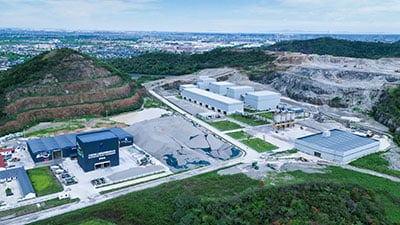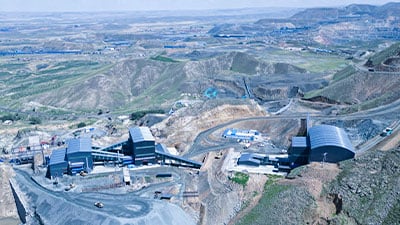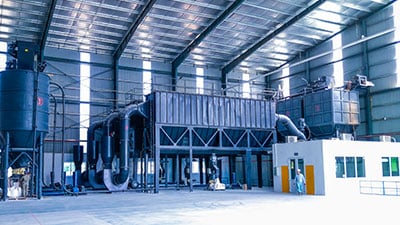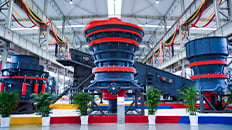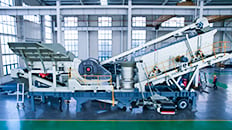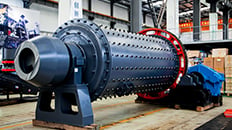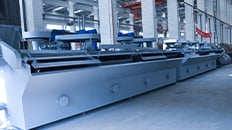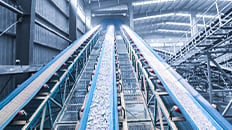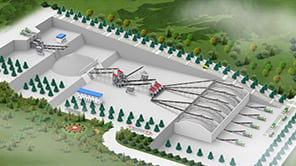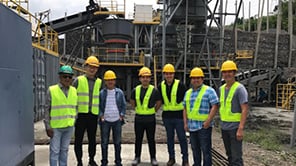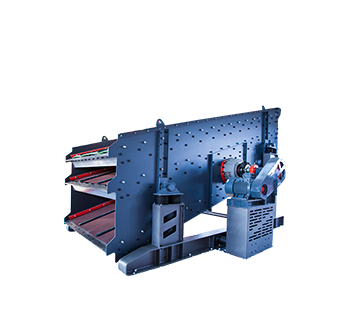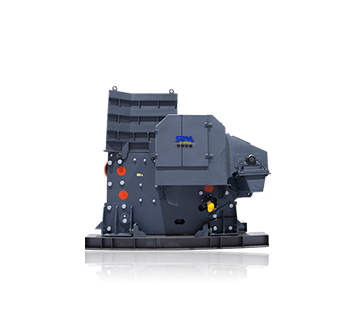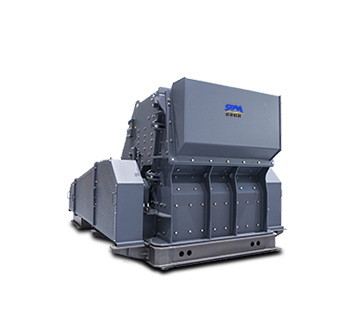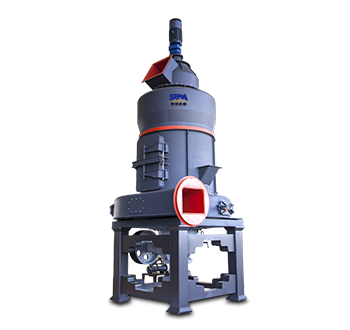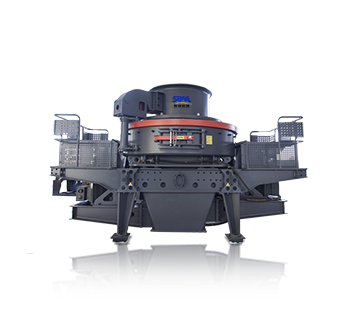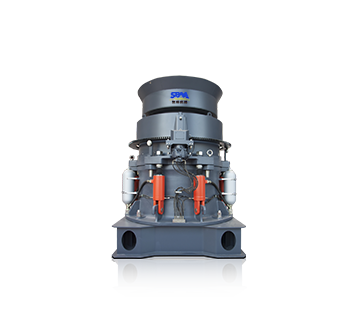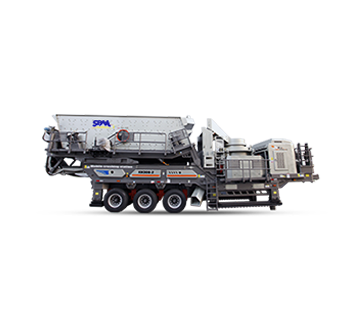Summary:Through this article, you can learn about the comprehensive knowledge of sand making machine and artificial sand.
How To Configure An Artificial Sand Making Plant?
The equipment configuration of artificial sand making plant includes vibrating feeder, coarse crusher, medium and fine crusher, vibrating screen, sand making machine, belt conveyor. Among them, feeders, vibrating screens and conveyors are auxiliary equipment.

1. Feed
The stones blasted from the mountain are sent to the vibrating feeder through the dump truck. Vibrating feeder has strong adaptability, stable operation and high cost performance. It is a feeding equipment widely used in sand and gravel enterprises. The vibrating feeder can feed the crushing equipment continuously and evenly, effectively prolonging the service life of the equipment. Small volume, light weight, small power, compact structure, convenient installation, low operation cost and low investment cost.
2. Coarse and Fine Crushing
According to different crushing purposes, crushers are divided into coarse crushing and medium fine crushing: coarse crushers can process large stones to medium particle size at one time; The medium and fine crusher is mainly used to further crush and reshape the coarse crushed stone to meet the high standard requirements of construction projects for stone. The vibrating feeder evenly sends the stones to the jaw crusher, and the broken stones from the jaw are broken for the first crushing, that is, coarse crushing. The stones broken from the jaw are then transported to the cone crusher or impact crusher through the belt conveyor for secondary crushing, that is, fine crushing.

3. Sand Making and Screening
The finely crushed materials are sent to the sand making machine by belt conveyor for fine crushing, and the finely crushed materials are screened out by vibrating screen.
The general production line can be completed by the above three steps, but for those with strict requirements on the powder content of sand, a sand washer can be added after fine crushing and screening. Circular vibrating screen and linear vibrating screen are common in sand production line. Belt conveyor is the hub of sand production line. It has the advantages of low kinetic energy consumption, high production efficiency, large conveying capacity, flexible use, economy and practicality.
10 Leading Faults And Solutions Of Sand Making Machine
We've had a lot of discussion about the sand making machine. In operation, it's inevitable that sand making machine will encounter a variety of problems. Once sand maker being in breaking down, it will affect the production efficiency and then affect the economic benefits.
Today we will provide you with a summary of 10 common failures and teach you how to deal with them. I hope this article will help you in the future if you encounter such problems.
Fault 1: The Equipment Is Not Running Smoothly With Overmuch Fuselage Swings
Fault 2: The Equipment Made Abnormal Noise During Operation
Fault 3: Bearings Are Not Flexible
Fault 4: High Temperature Of Bearings
Fault 5: The Sealing Rings Of The Shaft Are Damaged
Fault 6: Oil Soaks Into The Upper And Lower End Of The Shaft
Fault 7: The Discharge Size Becomes Larger
Fault8: The Machine Sounds Rise Suddenly With A Boom
Fault 9: Excessive Idling Resistance
Fault10: There Is A Clanking Of Metal In The Sand Making Machine
Manufactured Sand
Sand can be divided into natural sand and manufactured sand:
Natural sand: Rock particles with a particle size of less than 5mm, formed by natural conditions (mainly weathering of rocks), are called natural sand.
Manufactured sand:rock, mine tailings or industrial waste slag particles with particle size less than 4.7MM, which are made by mechanical crushing and screening after soil removal treatment, but soft and weathered particles are not included.

Advantages Of Manufactured Sand
1. The raw material of manufactured sand is fixed and produced after being broken by special crushing equipment. The mechanized production mode ensures the quality of manufactured sand is stable, adjustable and controllable, and can adjust the relevant parameters such as particle size distribution and fineness according to the needs of the project, which has better engineering applicability than river sand.
2. The surface of river sand is usually smooth after being scoured by water flow, while the manufactured sand has many sections and rough surface, so the machine-made sand particles can better combine with cementitious materials such as cement.
3. The raw materials of manufactured sand sand can come from some solid wastes. At the same time, in urban planning and construction, a large number of construction waste can be broken by mobile crusher to produce and process recycled aggregate, which not only solves the problem of environmental pollution, but also improves the utilization rate of natural resources.
4. During the period of shortage of river sand resources and rapid rise of raw material prices, the production cost of concrete enterprises can be reduced and the impact on the engineering field can be reduced.
The Role of IoT in Sand Making Machine
The Internet of Things (IoT) is revolutionizing various industries, and the sand making sector is no exception. By integrating IoT technology into sand making machine, manufacturers can enhance operational efficiency, improve product quality, and ensure better maintenance practices. Here’s a detailed look at the role of IoT in sand making machine.

- 1. Real-Time Monitoring
- 2. Predictive Maintenance
- 3. Enhanced Automation
- 4. Remote Monitoring and Management
- 5. Improved Safety
- 6. Environmental Monitoring
The integration of IoT technology into sand making machines is transforming the industry by enhancing efficiency, safety, and sustainability. With real-time monitoring, predictive maintenance, and improved automation, IoT is not only optimizing operations but also paving the way for smarter and more environmentally friendly sand production. As the technology continues to evolve, its impact on the sand making industry is expected to grow, offering new opportunities for innovation and improvement.
Why Does The Sand Making Machine Fail In Lubrication?
Lubrication is an important part of daily maintenance of sand making machine. Lubricating can reduce wear of mechanical parts and extend their service life. In addition, the frictional heat generated during the operation of the equipment can also be dissipated through lubricating oil.

But there are still some problems even if we have already lubricated the sand making machine regularly. Now we can tell you that it may be due to a failure of lubrication. So the question is what causes the failure of lubrication? And how should we do?
Actually, there may be many reasons for the failure of lubrication of sand making machine, but here I will list 5 major reasons that cause the lubrication of sand making equipment failed.
1. Lubricating Oil Deterioration
2. The Sand Making Machine Is Clogged
3. Inappropriate Lubricating Oil
4. The Lubrication System Is Short Of Oil
5. There Are Impurities In Lubrication System
In addition, if you want to do lubrication well when using the sand making machine, you also need to buy qualified lubricating oil and maintain the correct lubrication operation.
9 Reasons And Solutions For Abnormal Vibration Of Sand Making Machine
Rotor is the core component of sand making machine. The principle of the sand making machine is to use the inertial kinetic energy of the rotor to rotate at a high speed to project the material in the circumferential direction through the channel of the rotor wheel, and impact the material accumulated on the impact anvil or the lining plate for impact crushing or shaping. The reshaped and rebounded materials are then crushed by the hammer plate integrated outside the high-speed rotor.
After the rotor vibrates for some reason, it is very likely to cause vibration of the entire equipment, and the vibrating rotor will greatly affect the use of the equipment, and even lead to failures. Here are 9 reasons and solutions for abnormal vibration of sand making machine.
- 1. Deflection Of Motor Shaft And Rotor Pulley
- 2. The Rotor Bearing Is Damaged
- 3. The Rotor Is Unbalanced
- 4. Material Blockage
- 5. The Foundation Is Not Firm Or The Anchor Bolts Are Loose
- 6. Feed Quantity Is Too Much Or The Size Of The Material Is Too Large
- 7. Bending Deformation Of Main Shaft
- 8. Wear Of Pulleys And Belts
- 9. Wear And Fall Off Of Wear-Resistant Parts
Guidelines for Sand Making Machine Maintenance
As important equipment for sand production, sand making machine plays a vital role in ensuring stable supplies of manufactured sand to meet various construction needs. However, operating such high-performance machines under heavy-duty conditions requires diligent maintenance practices to maximize performance and longevity.

Maintenance is crucial for the efficient and prolonged operation of a sand making machine. Here are some general guidelines for the maintenance of a sand making machine:
- 1. Regular Inspection: Conduct routine checks on the machine to identify any signs of wear, loose parts, or damage. This includes inspecting the rotor, wear plates, bearings, belts, and other critical components.
- 2. Lubrication: Ensure proper lubrication of all moving parts to reduce friction and wear. Follow the manufacturer's recommendations for the type and frequency of lubrication required.
- 3. Belt Tension: Check and adjust the tension of belts regularly to ensure smooth operation and prevent slippage.
- 4. Rotor Maintenance: Inspect the rotor for wear and tear. Replace worn-out rotor tips promptly to maintain the efficiency of the crushing process.
- 5. Wear Parts Replacement: Regularly check and replace wear parts such as wear plates, anvils, and liners to maintain the machine's performance and output quality.
- 6. Cleaning: Keep the machine clean from dust, debris, and material buildup. Regular cleaning helps prevent blockages and ensures optimal performance.
- 7. Electrical Components: Check electrical connections, controls, and safety devices to ensure they are functioning correctly. Address any issues promptly to avoid electrical malfunctions.
- 8. Safety Measures: Ensure that all safety guards and features are in place and functioning properly to prevent accidents and ensure a safe working environment.
- 9. Training: Provide training to operators on the proper operation and maintenance of the sand making machine to maximize its lifespan and efficiency.
- 10. Record Keeping: Maintain detailed records of maintenance activities, repairs, and replacements. This helps track the machine's performance over time and schedule preventive maintenance effectively.
- 11. Professional Service: Schedule regular maintenance by qualified technicians to conduct thorough inspections and address any potential issues before they escalate.
4 Tips To Improve The Production Capacity Of Sand Making Machine
Sand making machine is one of the commonly used sand making equipment. Improve the production efficiency of sand making machine can help customers get higher profit. Here are 4 tips to improve the production capacity of sand making machine in the production process.
1. Adjust The Speed Of Belt Pulley Properlye
2. Pay Attention To Lubrication And Change The Worn Parts Timely
3. Feeding Continuously And Evenly
4. Properties Of Raw Material
What are the common stone materials for making sand?
It is understood that as long as the water content of the ore is within a certain range, it can be used to produce manufactured sand by sand making machine. In the mining industry, there are nearly 200 kinds of stones can be used to produce manufactured sand, including solid wastes such as tailings, construction waste, coal gangue, etc. Here is an introduction to common manufactured sand materials and corresponding sand making equipment.
River pebble, granite, basalt, limestone, iron ore, etc.
These stones are all ideal materials in for building. They are hard in texture and can be used as raw materials in sand making production. For example, manufactured sand made of basalt can be mixed with concrete, which can reduce the weight of concrete, and also has the functions of sound insulation and heat insulation. It is a good aggregate for lightweight high-rise building concrete. The manufactured sand produced from river pebbles is often used for road paving and house construction. The stone powder produced in the production of machine-made sand from granite and limestone can also be reused.
2. Sandstone, quartz sandstone, etc.
These stones are mainly composed of feldspar and quartz, which belongs to sedimentary rock. They are good raw material for manufactured sand in terms of grain shape and strength, which can reach or even be better than natural sand. In addition, manufactured sand produced by sandstone also has the advantages of non-weathering, non-melting, sound absorption, and moisture-proof, and it is also a good building and decoration material.
When we use sandstone to crush into construction sand, it needs to go through the production process of crushing, sand making, screening, etc. The whole crushing plant needs to be reasonably matched to achieve low investment and high efficiency. According to the characteristics of sandstone, sandstone is suitable for the following equipment.
3. Tailings, construction waste, coal gangue, etc.
These stones belong to industrial solid waste. But with the advance of sand making process, these wastes are also "treasures", especially construction waste. In recent years, construction waste treatment is a very popular field in aggregates industry, and it has been sought after by a large number of investors. Construction wastes contains lot of crushed stones, concrete blocks, bricks and tiles, which can be crushed and made into new aggregates, and then used in highways and construction.
Using these industrial wastes to make manufactured sand can not only save costs and get high profits, but contribute to waste recycling.
What is the Machine that Turns Rocks Into Sand?
The machine used to turn rocks into sand is called a sand making machine, also known as a vertical shaft impact (VSI) crusher.In the construction and mining industries, the demand for high-quality sand is ever-increasing. Sand serves as a crucial component in concrete production, asphalt, and various construction applications. To meet this demand, the sand making machine has emerged as a vital piece of equipment, transforming rocks and other materials into fine sand.

Advantages of Using Sand Making Machine
- High Efficiency: Sand making machines are designed to process large volumes of material quickly, ensuring a steady supply of sand.
- Quality Control: These machines can produce uniform sand particles, meeting specific industry standards for size and shape.
- Versatility: Sand making machines can handle various materials, including hard rocks and softer aggregates, making them adaptable to different operations.
- Cost-Effectiveness: By producing sand on-site, companies can reduce transportation costs and reliance on external suppliers.
Applications of Sand Making Machine
Sand making machines play a crucial role in various industries, including:
- Construction: High-quality sand is essential for concrete production, as it enhances strength and durability.
- Landscaping: Sand is used in gardens, playgrounds, and sports fields, making sand making machines vital for landscaping projects.
- Manufacturing: Industries such as glass, ceramics, and foundries require specific sand types for production processes.
- Environmental Applications: Sand can be used in filtration systems and for erosion control, highlighting the versatility of sand making machines.
How To Improve The Efficiency Of Pebble Sand Making Machine?
As important equipment for sand processing in manufactured sand production, the sand production efficiency is closely related to the overall benefit of operation. So, what method can effectively improve the sand production efficiency of sand making machine when crushing river pebble? Let's see it!

1. First of all, replace the shaft in time
Shaft is a very key point for the normal operation of the sand making machine, but it’s prone to wear out, so it’s necessary to replace the shaft every once in a while. It is cleaned during the replacement process and then lubricants should be added to make the shaft better serve the sand making machine.
2. Check the condition of the parts inside the machine regularly
If the vulnerable parts are not replaced in time, it will not only delay the production and affect the efficiency of sand making equipment, but also cause great damage to the equipment itself in serious cases. Therefore, users should develop the habit of checking the equipment regularly and replacing the worn parts in time.
3. Notice the tightness of the transmission belt
Excessive tightness will affect the power transfer of motor to the sand making machine, thus affecting the sand production efficiency. So it is necessary for users to pay attention to the tightness of the power transmission belt.
The Differences Between Dry Sand Making and Wet Sand Making
Sand making is a crucial process in the aggregate industry, particularly for construction and infrastructure projects. The choice between dry sand making and wet sand making methods can significantly impact product quality, operational efficiency, and environmental considerations. This article explores the key differences between these two methods, examining their processes, advantages and disadvantages, and applications.

Dry Sand Making Method
Dry sand making involves the use of crushing, screening, and classification processes to produce sand without the addition of water. The process typically includes the following stages:
- Crushing: Raw materials are crushed using various crushers, such as jaw crusher, impact crusher or sand making machine to reduce them to smaller sizes.
- Screening: The crushed material is screened to separate fine particles from larger ones.
- Classification: The finer particles are further classified using air classifiers or vibratory screens to ensure uniformity in size.
Advantages of Dry Sand Making
- Reduced Water Usage: As the name suggests, dry sand making does not require water, making it an environmentally friendly option in water-scarce regions.
- Lower Operational Costs: The absence of water treatment and disposal systems can lower operational costs.
- Easy Material Handling: Dry sand is easier to handle, transport, and store compared to wet sand, which can be heavy and clumpy.
- Quality Control: Dry sand can have a more consistent quality and gradation, which is crucial for many construction applications.
Wet Sand Making Method
Wet sand making involves the use of water during the sand production process. The typical stages include:
- Crushing: Similar to dry sand making, raw materials are crushed to reduce their size.
- Washing: Water is added to wash the crushed materials, effectively removing impurities such as clay, silt, and dust.
- Screening and Classification: The washed material is then screened and classified to produce clean, high-quality sand.
Advantages of Wet Sand Making
- Effective Cleaning: The use of water helps to remove impurities, ensuring that the final product has a higher purity level, which is critical for concrete production.
- Dust Control: Water effectively suppresses dust during the sand making process, contributing to a cleaner working environment and compliance with air quality regulations.
- Higher Production Capacity: Wet processes can often handle larger volumes of material, making them suitable for high-demand situations.
High-Efficiency Sand Making Machine For Construction Aggregates
In the construction industry, the demand for high-quality aggregates is constantly growing. As an essential component of concrete, asphalt, and various construction materials, sand plays a critical role in ensuring the durability and performance of these products. However, the supply of natural sand is often limited, leading to the need for efficient and innovative sand making solutions.

Enter the high-efficiency sand making machine from SBM, a leading provider of advanced crushing and grinding equipment. These sand making machines are designed to transform a variety of raw materials, including rocks, quarried stone, and recycled construction waste, into high-quality sand that meets the industry's stringent requirements.
The key to the success of SBM's sand making machines lies in their advanced technology and engineering. Featuring a unique vertical shaft impact (VSI) design, these machines utilize high-speed rotor impact to effectively crush and shape the input material into cubical, well-graded sand particles. SBM's VSI5X and VSI6X sand making machines are two of the company's flagship models, offering exceptional performance and versatility.
Optimizing Sand Production: Selecting The Ideal Sand Making Machine
Sand making machine, also known as vertical shaft impact crusher, is a key equipment for producing high-quality artificial sand. It is widely used in various industries such as gravel production, mining, metallurgy, building materials, and chemical engineering. The primary function of a sand making machine is to transform large-sized materials into smaller particles, specifically designed for sand production.
SBM's Four High-Quality Sand Making Machines
SBM has made significant advancements in the field of sand making machines. We are committed to providing a variety of high-quality sand making machine models to meet the diverse needs of our customers.
VSI Sand Making Machine
Input Size: 0-50mm
Capacity: 60-520TPH
Material: Granite, quartz, basalt, pebble, limestone, dolomite, etc.
VSI5X Sand Making Machine
Input Size: 0-50mm
Capacity: 70-640TPH
Material: Granite, limestone, marble, basalt, quartz,pebble, dolomite, etc.
Product Features: Lower maintenance costs, longer service life of vulnerable parts, quicker adjustments.
VSI6X Sand Making Machine
Input Size: 0-50mm
Capacity: 100-583TPH
Material: Granite, quartz, basalt, pebble, limestone, dolomite, etc.
Product Features: Lower maintenance costs, longer service life of vulnerable parts, bigger capacity
VU Sand Making System
Input Size: 0-15mm
Capacity: 60-205TPH
Material: Granite, marble, basalt, limestone, quartz, pebble, copper ore, iron ore.
How to Choose the Ideal Sand Making Machine Model?
With such a wide range of sand making machine models available, choosing the right one can seem challenging. Here are some key factors to consider when selecting a suitable model:
- 1. Production Requirements
- 2. Machine Configuration
- 3. Machine Configuration
- 4. Energy Efficiency
- 5. Quality of Sand Output
- 6. Maintenance and Service
- 7. Cost and Budget
Structural Optimization of Sand Making Machine Parts
In order to ensure the overall performance of the equipment, the structure of key parts on VSI6X series sand making machine is optimized, such as the impeller, the bearing cylinder, and the main body. Several national patent technologies ensures the high yield, high efficiency and low cost of the crushing equipment in crushing operation.

1.High efficient impeller with four-port deep cavity
In order to improve the efficiency of crushing equipment, VSI6X series sand making machine adopts the new design of impeller with four-port deep cavity, which optimizes the throw angle and speed of the material and has large throughput of materials and higher crushing efficiency. The crushing performance of this equipment is 20% higher in crushing efficiency than that of the three-port impeller when the material is the same.
2.The design of the national patent bearing cylinder
The bearing cylinder of sand making machine is new in structure design, adopts special dust-proof and sealing structure, obtains several national patents and is equipped with imported bearings, further ensuring the reliability in rotating.
3.Large throughput of the main body
The main body of VSI6X series sand making machine is simple in design and has large throughput. The materials are easy to go through, which can efficiently prevent the materials with too much water from blocking the underpart of the main body and raise the crushing efficiency of the whole equipment.
4. More wear-resistant wearing parts, reducing the usage cost
The impeller is the core part of the equipment. The service life of the wearing parts is greatly improved and the usage cost of the wearing parts is greatly reduced by optimizing some structure and craft of the impeller and using the high-quality wear-resistant materials. When it is used to dispose super hard materials, the “rock on rock” work mode is recommend to the customers, which has less wearing parts and low usage cost.
7 Key Factors Will Improve Production Of Sand Making Machine
Many users are always complaining the low production of their sand making machine after buying and want to know what the reason. In fact, in the actual production, there are many factors related to the output of sand making machine such as: the hardness of material, humidity, finished sand fineness, equipment quality, and so on. But 7 of them are the most crucial. The details are as follows:
1. Different Raw Materials
2. Design Of Sand Production Line
3. Machine Type
4. Quality Of Machine
5. Speed Of Impeller
6. Standard Operation And Periodic Maintenance
7. Requirements On Fineness Of Finished Sand
4 Main Types Of Sand Making Machine On The Market
With the development of science and technology and the upgrading of technology, mining machinery is becoming more and more strict in the selection of crushing equipment. In the continuous research and development, transformation and upgrading, different types of sand making machines have appeared one after another. Here are the introductions of 4 main types of sand making machine on the market.
1. Compound Sand Making Machine
It is a traditional and classic type of vertical sand making machine with no grid section design and a very high sand output ratio. Compound sand making machine is mainly suitable for processing limestone, coal and other raw materials with a compressive strength below 140 MPa and humidity under 15%. A single sand making machine can produce sand, which is suitable for small scaled production plant.
2. Double Roller Sand Making Machine
In the working process of double roller sand making machine, the two rollers squeeze each other to process raw materials. And the rollers adopt highly wear-resistant materials, which can process raw materials with high hardness. Whether used for crushing or sand making, double roller sand making machine is very popular among sand and gravel production companies with small or medium scaled because of the low price.
3. Vertical Shaft Impact Crusher
Vertical shaft impact crusher is the new generation of sand making equipment. It is very cost-effective and is one of the most popular sand making equipment on the market. Vertical shaft impact crusher has high efficiency and the products have good grain shape and it has the dual functions of sand making sand shaping. Vertical shaft impact crusher adopts deep cavity impeller design, enhances efficiency by 30% and reduces wear by 40%. The sealed cavity design of the sand making machine reduces the influence of dust and noise, and realizes environmental protection.
4. Portable Sand Making Machine
Portable sand making machine can be used for single-machine production, or multiple units can be used for large-scaled sand production. There are two types of portable sand making machine: wheel-type portable sand making machine and crawler portable sand making machine. It can be transferred flexibly and has high production efficiency, suitable for factories where the material distribution is relatively wide or the environmental protection situation is very severe.
How Does A Sand Making Machine Work?
The sand making machine is mainly composed of seven parts: feed, distributor, whirling crushing chamber, impeller experience, main shaft assembly, base drive device and motor.
Compared with the traditional sand making equipment, the design of the new equipment crushing cavity is more reasonable. The sand making machine adopts the principle of "stone-to-stone" or "stone-to-iron" in the production process.
During the whole crushing process, the materials are crushed by the impact of each other, without direct contact with metal components, which reduces pollution and prolongs mechanical wear time.

Work Flow of Sand Making Plant:
Vibrating Feeder - Jaw Crusher - Impact Crusher - Sand Making Machine - Vibrating Screen - Sand Washer
Sand Making Machine Working Principle & Wear-Resistant Parts
In artificial sand making industry, vertical shaft impact crusher, also known as sand making machine, is widely used as the main sand making equipment. There are two kinds of crushing methods of sand making machine: “rock on rock” and “rock on iron”. But, many people don’t know the differences of these two crushing methods very clearly. In this article, we mainly introduce the 2 crushing methods of sand making machine and their comparison.

Comparison Of Applicable Situations
Generally, “rock on rock” crushing method is used for shaping and “rock on iron” crushing method is used for sand making.
The “rock on rock” crushing method is suitable for crushing abrasive materials with medium hardness and above, such as basalt etc. During the crushing process, materials injected from the impeller impacts the material liner and do not directly contact the metal components of sand making machine, reducing iron consumption and thus reducing maintenance time. The shape of the finished products is good under the crushing method of "rock on rock".
The “rock on iron” crushing method is suitable for crushing abrasive materials with medium hardness and below, such as limestone etc. Under the “rock on iron” crushing method, sand making machine has high efficiency.
How Is Sand Processed - Artificial Sand Technology
Compared with natural sand stone, artificial sand stone is widely used for its advantages of rich material sources, little seasonal impact on processing, good grain shape and grading of finished materials, enhanced concrete strength and reduced cement consumption.
In the design of artificial sand and stone system, sand making technology is the key. How to choose the right production technology to ensure the reliable operation, advanced technology and reasonable economy of the processing system is still an important problem in the design of the artificial sandstone processing system. This article introduces three kinds of sand making processes which are widely used at present.
1. Technology Of Rod Grinding Machine-Made Sand
The particle size distribution of artificial sand rolled by rod mill has a certain rule, that is, one kind of fineness modulus has only one kind of particle size gradation. Therefore, in the production of artificial sand, it is necessary to control the stability of fineness modulus, and the grading of its particle size does not need to be classified.

2. Technology Of Vertical Shaft Impact Crusher Sand
The high-speed rotating materials are used to break each other by themselves and friction between materials.
The vertical shaft impact crusher can be divided into "stone striking iron" and "stone striking stone" according to its working mode: the sand making machine impeller rotates at a high speed driven by the motor, throwing materials out of the impeller flow channel and hitting them on the reaction plate. The vertical shaft impact crusher equipped with the reaction plate is called "stone striking iron"; if the reaction plate is not installed, the materials thrown out by the impeller of the crusher will be hit and formed naturally This kind of situation is called "stone striking". The sand production rate of "stone and iron" is higher than that of "stone and stone".
3. Combined Sand Making Technology
Through the analysis of the sand production law and technological characteristics of rod mill and vertical shaft breaking, it can be found that the sand production rate, fineness modulus, powder content and product grading are all highly complementary. Therefore, the combination of rod mill and vertical shaft breaking can make up for their shortcomings.
Six Development Trends Of Sand Making Machine
The competition of sand making machine manufacturers is very fierce, if the existing manufacturers want to stand out in the industry, they need to establish a general view and pay more attention to the development of sand making machine. The development of sand making machine is very rapid, and its future development trends are mainly as follows:
1. Large-Scale Development
2. Environmental Protection
3. Automation
4. Development Of Mechatronics
5.Simplified Structure
6. Standardization Development
3 Ways To Help You Choose A Good Sand Making Machine Manufacturer
With the acceleration of the urbanization in the world, and the national new-type urbanization plan is also on the agenda, the market demand for aggregates is getting bigger and bigger, and the standards for the quality of aggregates are also getting higher and higher.
This has spawned the rise of a large number of sand making machine manufacturers. The number of sand making machine manufacturers has increased unprecedentedly. For users, how to find a suitable one from so many sand making machine manufacturers?

No I will tell you: Don't worry, there are 3 tips can help you!
1.Choose a responsible manufacturer
2. Do more comparison
3.Conduct field trips
How Much A Sand Making Machine With Capacity Of 500TPH Will Cost?
Sand making machine is the common production equipment of sand making plant. It needs to cooperate with other equipment to meet the production requirements of different users. The question many users are concerned about is how much a set of sand making machine will cost.
The complete set of sand making machine will be more expensive than a single one. For the complete set of sand making machine, the equipment configuration is more perfect, the quality of the manufactured sand is better, environmental protection is higher, and the price is more expensive. A complete set of sand making machine quotation in 300,000-5,000,000, the larger the sand making plant, the higher the quotation.

The price of a complete set of sand making machine on the market is hundreds of thousands, and there is a big price difference and instability. So what factors lead to the price difference?
1. Cost Input
2. Specifications & Models
3. Quality
4. Supply & Demands

